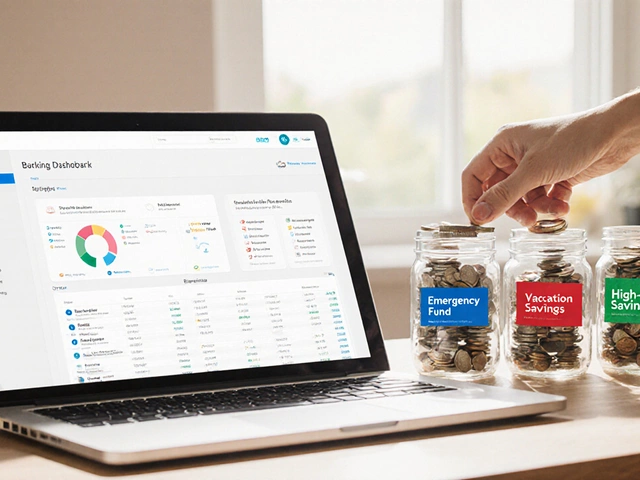
Have you ever heard of the 70% rule in investing? It's a pretty handy guideline, especially if you're dipping your toes in the world of investments. Imagine it's like having a GPS for your financial decisions. This rule's all about making sure you don't pay too much compared to what you can gain. It's used a lot by real estate investors, but it's also quite valuable when you're looking at stocks or other opportunities, particularly in dynamic markets like India.
So, what's the deal with this 70% rule? In a nutshell, the idea is to not spend more than 70% of the after-repair value (or ARV) minus the costs to fix up whatever it is you're investing in. The ARV is just a fancy way of saying how much it's going to be worth once you spruce it up. Stick with this rule, and you've got a solid buffer to maintain profits even if things don't go exactly as planned. But the cool part? This isn't just for real estate gurus. Anyone can apply it to protect their investments and avoid nasty surprises.
- Understanding the 70% Rule
- Why It Matters in Indian Markets
- Real-World Examples and Applications
- Tips for Effective Implementation
Understanding the 70% Rule
The 70% rule is like the flashlight in a dark room when you're investing. Basically, it keeps you from overspending in the hopes of making a profit, especially in high-stakes areas like real estate. But let's break it down a bit.
The idea is simple: buy a property for no more than 70% of its after-repair value (ARV) minus any needed repair costs. Why 70%? This percentage allows a margin for all those unpredictable twists and turns that can pop up while fixing up a property. Plus, if you're selling, it ensures there's enough room for decent profit after all expenses.
Here's a quick example. Say a property’s ARV is estimated at 10 million INR, and you think it'll take around 1 million INR to spruce it up. According to the 70% rule, the maximum you should pay for the property is:
- 70% of 10 million is 7 million.
- Subtract repair costs: 7 million - 1 million = 6 million INR.
You shouldn’t spend more than 6 million INR for that investment to stay in the safe zone. The buffer helps cover unexpected market dips or extra repair costs, making sure you're not left in a lurch.
This strategy isn't exclusive to real estate. Investors in stocks and other markets also use versions of it to manage risks. It’s all about keeping the buying price attractive relative to potential returns. India's market, with its mix of rapid growth and volatility, makes this principle even more relevant.
Being mindful of the 70% rule can be a game-changer. It isn't full-proof, but it nudges you toward sound investing tactics by minimizing surprises and safeguarding your funds against overspending. If you're thinking about diving into investing, keeping this rule in mind could be your first step towards more informed decisions.
Why It Matters in Indian Markets
Diving into the Indian markets with the 70% rule can feel like discovering a hidden hack for making smart investments. In India, where the market dynamics can be a bit unpredictable, this rule plays a vital role in keeping your investment moves sharp and effective.
Why is this so crucial here? Well, India's real estate and stock markets often experience fluctuations due to economic changes, policy shifts, and sometimes even just because of investor mood swings. By sticking to the 70% rule, you're essentially giving yourself a cushion to absorb these bumps.
The National Housing Bank reports that property prices in India have seen an average increase of 3-5% annually, yet many regions still experience volatility. Applying the 70% rule, especially in real estate, helps ensure that you're not over-leveraging your investments by paying above market value.
"Keeping margin for safety is crucial in markets like India, where price corrections can catch investors off-guard," suggests Ramesh Damani, a well-known Indian stock market investor and advisor.
In the stock market too, things can get rocky. The 70% rule can guide you on buying at a discount during dips, so your returns aren't eaten up by unforeseen changes.
Overall, the principle here is to invest without stretching too thin. India’s dynamic environment—packed with opportunities and a few pitfalls—makes following this rule a smart move. It's about staying calm and collected, giving you more confidence as you navigate the bustling investment landscape.

Real-World Examples and Applications
Alright, so let's make sense of this 70% rule with some real-world scenarios. Picture this: you're eyeing a charming fixer-upper in the bustling streets of Mumbai. The after-repair value (ARV) is estimated at INR 1 crore. Following the 70% rule, you’d aim to spend no more than INR 70 lakhs on the purchase and repairs combined, keeping some cushion for profits.
Now, why stick to this rule? Well, consider a scenario where costs overrun. You anticipated repairs might be around INR 15 lakhs for that house. That leaves INR 55 lakhs for the initial purchase. Sticking to this can save you from eating into profits if repairs cost more than expected or the real estate market doesn't boom as hoped.
This strategy isn't just for homes though. In the stock market, when a company’s current worth appears shaky, investors might shy away unless the purchase price is deeply discounted. Imagine you find a tech company slated to be the 'next big thing,' valued at INR 50 per share. But after in-depth research, you believe its potential could rise to INR 100 per share.
By applying the 70% rule, you'd only buy if the cost is around INR 70 or less for every share, ensuring room for additional investment or unexpected market dips. This keeps your risk lower, and you get to sleep a little easier at night knowing you've planned well.
In India, the vibrant real estate markets like Bangalore or emerging tech hubs can fluctuate rapidly. Here’s a small breakdown you might find handy:
| City | Average ARV | Max Spending using 70% Rule |
|---|---|---|
| Mumbai | INR 1 Cr | INR 70 Lakhs |
| Bangalore | INR 80 Lakhs | INR 56 Lakhs |
| Pune | INR 60 Lakhs | INR 42 Lakhs |
This table gives a snapshot of how maximum spending can vary by location when applying the 70% rule. Keeping these numbers in mind helps make informed choices, whether buying property or diving into stocks.
Tips for Effective Implementation
So, you're ready to roll with the 70% rule, but how do you make sure you're getting it right? Here are some practical tips to help you nail this strategy.
First up, always do your homework when estimating the After Repair Value (ARV). This number is the backbone of the 70% rule. Check out recent sales of similar properties in the same area, or if you're into stocks, look at the potential market upswing after necessary improvements.
Next, don't guess the repair costs—know them. You might feel like a DIY guru, but it's best to get quotes from actual contractors or suppliers. This way, you can avoid any nasty budget surprises.
- Research Thoroughly: Use real estate websites to check recent sales for accurate ARV. If dealing with investment strategies in India, look at local market trends and reports.
- Create a Buffer: Always keep a fallback of about 10-15% of your budget. Markets can be unpredictable, and having a little cushion can save you a lot of headaches.
- Network Like a Pro: Talk to seasoned investors who are applying the rule. They can give you insights that you won't find online.
And here's a little nugget for you: sometimes people think the 70% rule is rigid, but you can tweak it depending on the risk you’re willing to take and the market conditions. If it's a hot market, maybe aim for 75%, but in a slow one, sticking closer to 65% could be safer.
Lastly, keep your cool. Don't chase investment opportunities that only ‘kind of’ fit the rule. Discipline is key in following any strategy, and it’s the same with the 70% rule. Stay focused, do the math, and watch your investment grow smartly.







Write a comment